Dronelost.com – Drones are becoming more popular and affordable, allowing anyone to capture stunning aerial photos and videos. But with so many options on the market, how do you choose the best drone for your needs and budget?
We will compare two of the most popular drones: the Ruko F11 Pro vs DJI Mavic Mini. We will look at their features, performance, camera quality, and pros and cons, to help you decide which one is better for you.
The Ruko F11 Pro vs the DJI Mavic Mini are both compact and foldable drones that are designed for easy and fun flying. They are both suitable for beginners and hobbyists, as well as for some professional applications. They both have GPS and intelligent flight modes, such as follow me, orbit, and waypoint.
They both have high-quality cameras that can record 4K or 2.7K videos and take 12MP photos. They both have long battery life and decent flight range. They both come with remote controllers that can connect to your smartphone and display a live video feed from the drone.
However, there are also some significant differences between the two drones, which we will explore in more detail below.
Ruko F11 Pro vs DJI Mavic Mini Design Comparison
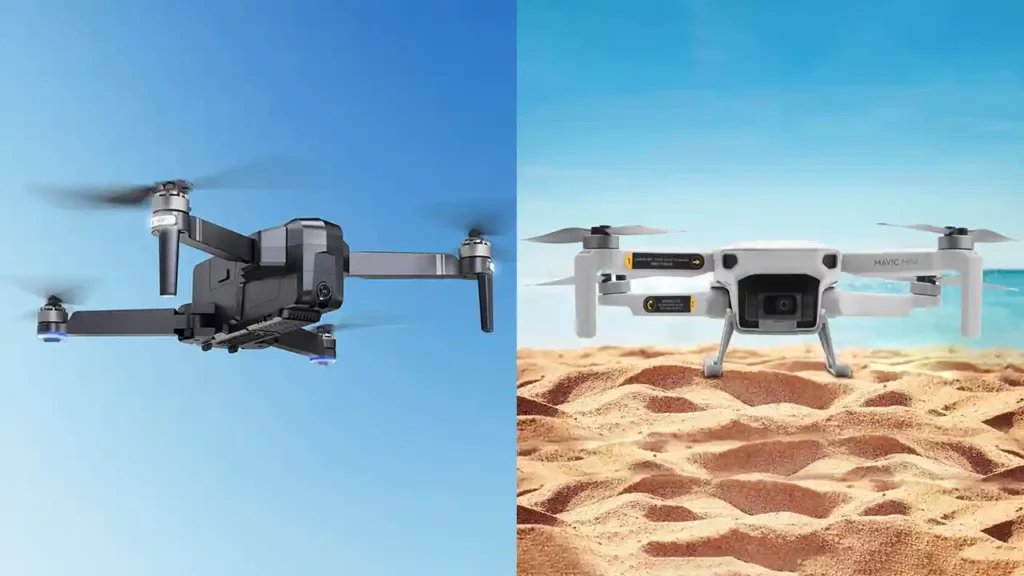
The Ruko F11 Pro has a sleek and rectangular body, with four foldable arms and propellers. It measures 17.5 x 15.9 x 3.2 inches when unfolded, and 7.1 x 4.7 x 3.2 inches when folded. It weighs 520 grams, which means it requires FAA registration in the US.
It has a black color scheme, with some red accents on the arms and the logo. It has a single LED light on the front, and four LED lights on the bottom, for low-light visibility and positioning.
The DJI Mavic Mini has a more rounded and curved body, with four foldable arms and propellers. It measures 9.6 x 11.4 x 2.1 inches when unfolded, and 5.5 x 3.2 x 2.2 inches when folded. It weighs only 249 grams, which means it does not require FAA registration in the US.
It has a light gray color scheme, with some orange accents on the propeller tips and the logo. It has four LED lights on the front, and four LED lights on the bottom, for low-light visibility and positioning.
The DJI Mavic Mini is clearly smaller and lighter than the Ruko F11 Pro, making it more portable and convenient to carry around. However, the Ruko F11 Pro has a more durable and sturdy design, making it more resistant to crashes and wind.
Performance and Flight Time
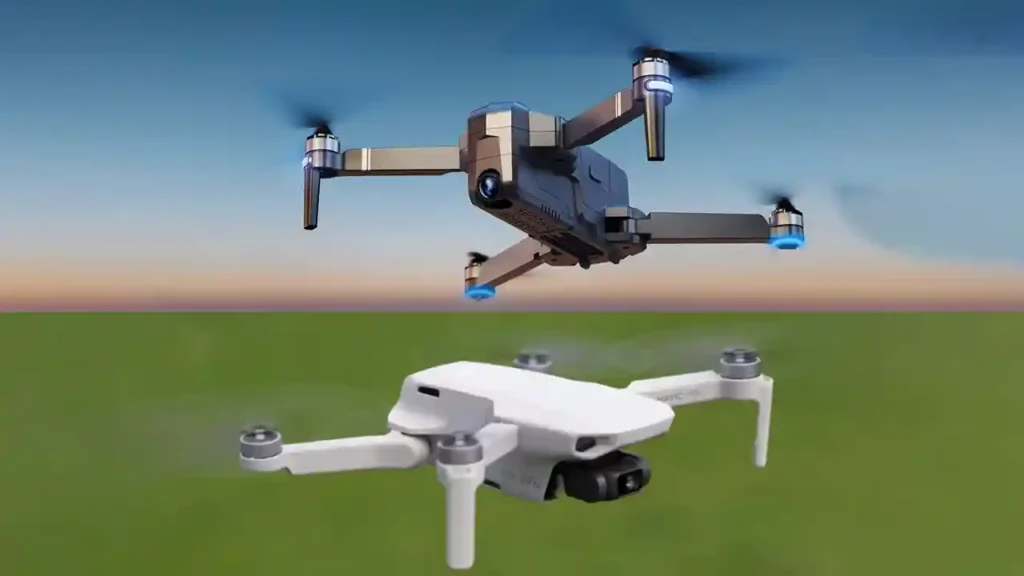
The Ruko F11 Pro has a powerful performance, thanks to its brushless motors and 2500mAh batteries. It can fly up to 26.8 mph in sport mode, and up to 120 meters in altitude. It has a maximum flight range of 1200 meters, which is impressive for its price range. It has a flight time of up to 30 minutes per battery, and it comes with two batteries in the package, giving you a total of 60 minutes of flying time.
The DJI Mavic Mini has a smooth and stable performance, thanks to its advanced flight controller and 2400mAh batteries. It can fly up to 29 mph in sport mode, and up to 300 meters in altitude. It has a maximum flight range of 4000 meters, which is outstanding for its size and weight. It has a flight time of up to 31 minutes per battery, and it comes with one or three batteries in the package, depending on the bundle you choose, giving you a total of 31 or 93 minutes of flying time.
The DJI Mavic Mini has a slight edge over the Ruko F11 Pro in terms of performance and flight time, as it can fly faster, higher, farther, and longer. However, the Ruko F11 Pro is not far behind, and it still offers a great flying experience for its price.
Camera and Video Quality
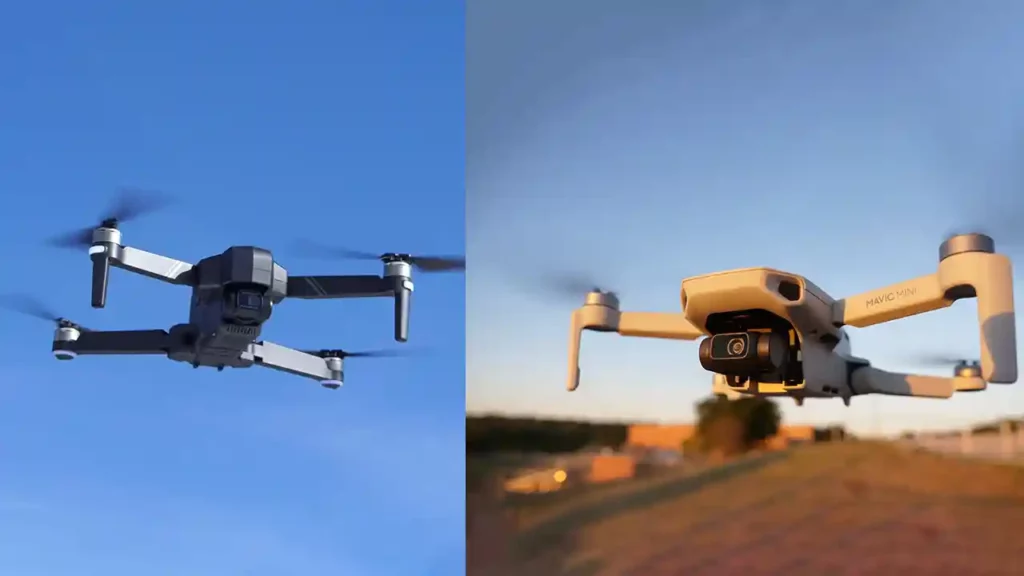
The Ruko F11 Pro has a 4K UHD camera, with a 120-degree field of view and a 90-degree adjustable angle. It can record 4K videos at 30 fps, or 2.7K videos at 60 fps. It can also take 12MP photos in JPEG format. It has a micro SD card slot that supports up to 128GB of storage. It does not have a gimbal stabilizer, but it has electronic image stabilization (EIS) to reduce the shakiness of the footage. It also has a 5GHz WiFi transmission system, which allows you to stream the video feed to your smartphone at 720p resolution.
The DJI Mavic Mini has a 2.7K camera, with a 83-degree field of view and a 90-degree adjustable angle. It can record 2.7K videos at 30 fps, or 1080p videos at 60 fps. It can also take 12MP photos in JPEG or RAW format. It has a micro SD card slot that supports up to 256GB of storage. It has a 3-axis gimbal stabilizer, which provides smooth and stable footage. It also has a 5.8GHz WiFi transmission system, which allows you to stream the video feed to your smartphone at 720p resolution.
The Ruko F11 Pro has a higher resolution camera than the DJI Mavic Mini, which means it can capture more details and clarity. However, the DJI Mavic Mini has a better camera quality than the Ruko F11 Pro, thanks to its gimbal stabilization, RAW photo support, and higher bit rate. The DJI Mavic Mini also has a more reliable and consistent video transmission system, which reduces the latency and interference of the signal.
Ruko F11 Pro vs DJI Mavic Mini Features
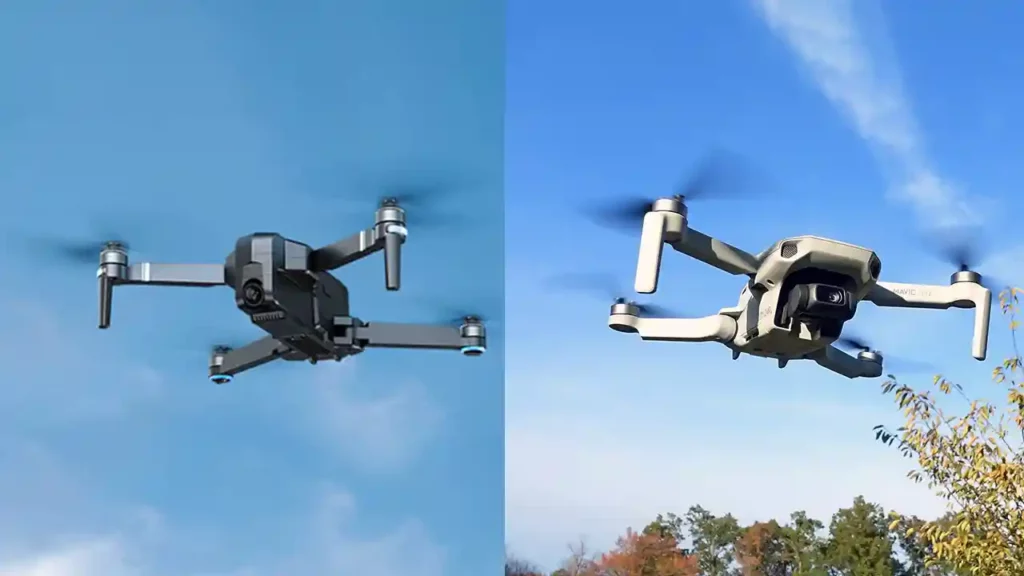
The Ruko F11 Pro has a variety of features and modes to enhance your flying and filming experience. It has GPS and optical flow positioning, which provide accurate and stable hovering and navigation. It has a return to home function, which automatically brings the drone back to the takeoff point when the battery is low, the signal is lost, or you press the button. It has a follow me mode, which tracks and follows your movement. It has an orbit mode, which circles around a point of interest.
It has a waypoint mode, which flies along a preset path. It has a gesture control mode, which allows you to take photos and videos by waving your hand. It has a headless mode, which simplifies the orientation of the drone. It has a speed adjustment mode, which lets you switch between three levels of speed. It has a one key takeoff and landing mode, which makes it easy to start and stop the flight.
The DJI Mavic Mini has a variety of features and modes to enhance your flying and filming experience. It has GPS and vision positioning, which provide accurate and stable hovering and navigation. It has a return to home function, which automatically brings the drone back to the takeoff point when the battery is low, the signal is lost, or you press the button. It has a quickshot mode, which performs predefined cinematic movements, such as dronie, rocket, circle, and helix.
It has a cine smooth mode, which slows down the speed and sensitivity of the drone, for smoother and more cinematic footage. It has a sport mode, which boosts the speed and agility of the drone, for more dynamic and exciting flight. It has a tripod mode, which reduces the speed and sensitivity of the drone, for more precise and stable flight. It has a one key takeoff and landing mode, which makes it easy to start and stop the flight.
The Ruko F11 Pro vs the DJI Mavic Mini have some similar features and modes, such as GPS, return to home, orbit, and speed adjustment. However, they also have some unique features and modes, such as follow me, waypoint, and gesture control for the Ruko F11 Pro, and quickshot, cine smooth, and sport for the DJI Mavic Mini. The DJI Mavic Mini also has a dedicated app, called DJI Fly, which provides more functions and settings, such as editing, sharing, tutorials, and safety tips.
Pros and Cons
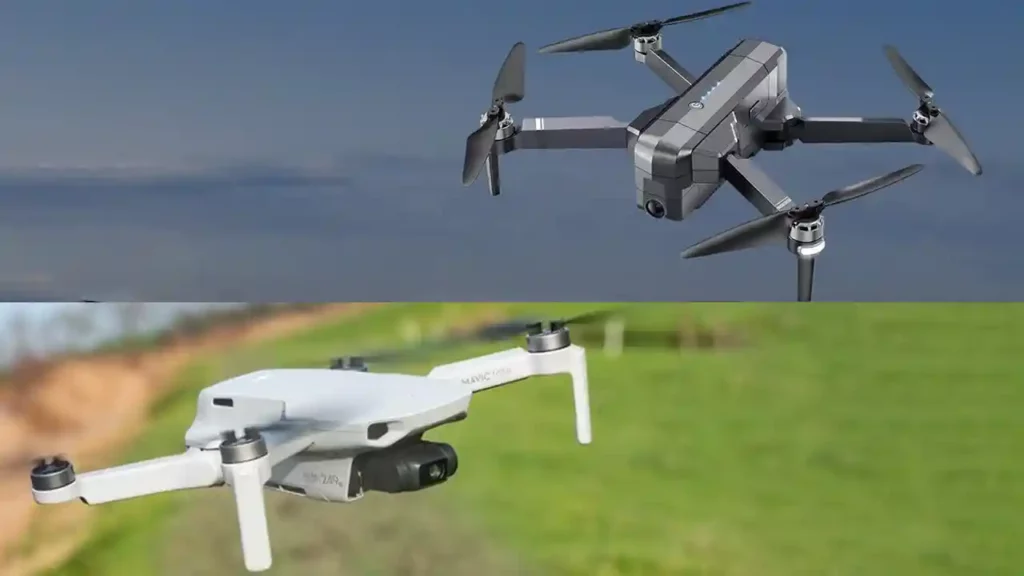
The Ruko F11 Pro and the DJI Mavic Mini both have their pros and cons, which we will summarize below.
The Ruko F11 Pro has the following pros:
- It has a 4K camera, which can capture more details and resolution.
- It has a long flight time and range, which can extend your flying and filming time.
- It has a durable and sturdy design, which can withstand crashes and wind.
- It has a follow me mode, which can track and follow your movement.
- It has a waypoint mode, which can fly along a preset path.
The Ruko F11 Pro has the following cons:
- It requires FAA registration, which can be a hassle and a cost.
- It does not have a gimbal stabilizer, which can result in shaky footage.
- It does not have RAW photo support, which can limit your editing options.
- It does not have a quickshot mode, which can simplify your filming process.
- It does not have a dedicated app, which can provide more functions and settings.
The DJI Mavic Mini has the following pros:
- It does not require FAA registration, which can save you time and money.
- It has a 3-axis gimbal stabilizer, which can provide smooth and stable footage.
- It has RAW photo support, which can enhance your editing options.
- It has a quickshot mode, which can perform predefined cinematic
- It has a quickshot mode, which can perform predefined cinematic movements, such as dronie, rocket, circle, and helix.
- It has a cine smooth mode, which slows down the speed and sensitivity of the drone, for smoother and more cinematic footage.
- It has a sport mode, which boosts the speed and agility of the drone, for more dynamic and exciting flight.
- It has a dedicated app, called DJI Fly, which provides more functions and settings, such as editing, sharing, tutorials, and safety tips.
The DJI Mavic Mini has the following cons:
- It has a lower resolution camera than the Ruko F11 Pro, which means it can capture less details and clarity.
- It has a shorter flight time and range than the Ruko F11 Pro, which can limit your flying and filming time.
- It has a less durable and sturdy design than the Ruko F11 Pro, which can make it more vulnerable to crashes and wind.
- It does not have a follow me mode, which can track and follow your movement.
- It does not have a waypoint mode, which can fly along a preset path.
Which drone is better for you?
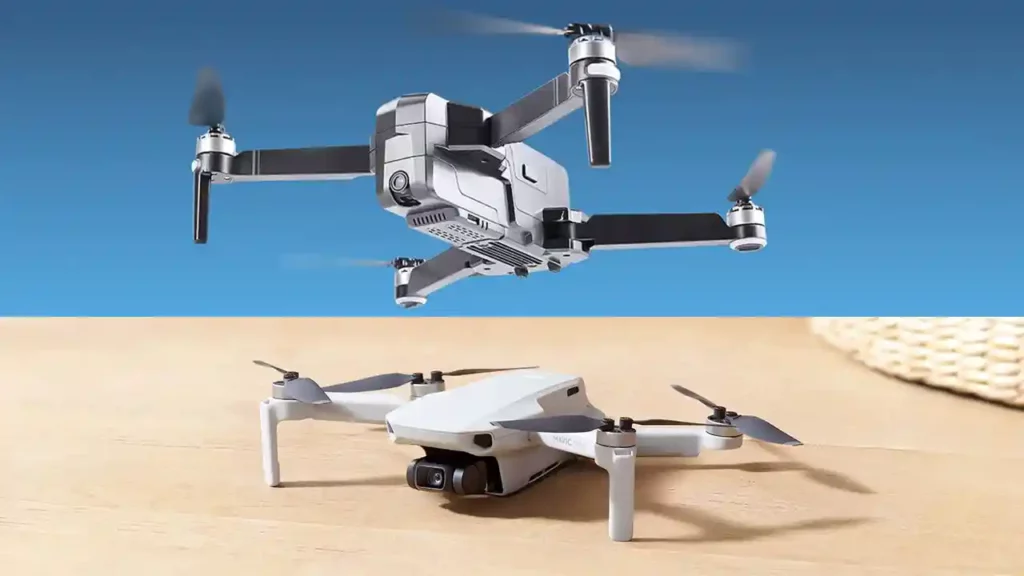
The Ruko F11 Pro and the DJI Mavic Mini are both excellent drones that offer a lot of value and fun for their price. However, depending on your preferences and needs, you may find one of them more suitable for you than the other.
If you are looking for a drone that has a higher resolution camera, a longer flight time and range, a more durable and sturdy design, a follow me mode, and a waypoint mode, then you may prefer the Ruko F11 Pro. It is a great drone for capturing more details and resolution, extending your flying and filming time, withstanding crashes and wind, tracking and following your movement, and flying along a preset path.
If you are looking for a drone that does not require FAA registration, has a 3-axis gimbal stabilizer, has RAW photo support, has a quickshot mode, has a cine smooth mode, has a sport mode, and has a dedicated app, then you may prefer the DJI Mavic Mini. It is a great drone for saving you time and money, providing smooth and stable footage, enhancing your editing options, performing predefined cinematic movements, slowing down or speeding up the drone, and providing more functions and settings.
Ultimately, the choice is yours, and you should consider your own budget, skill level, and purpose of using the drone. Both drones are amazing, and you will not regret buying either of them.
